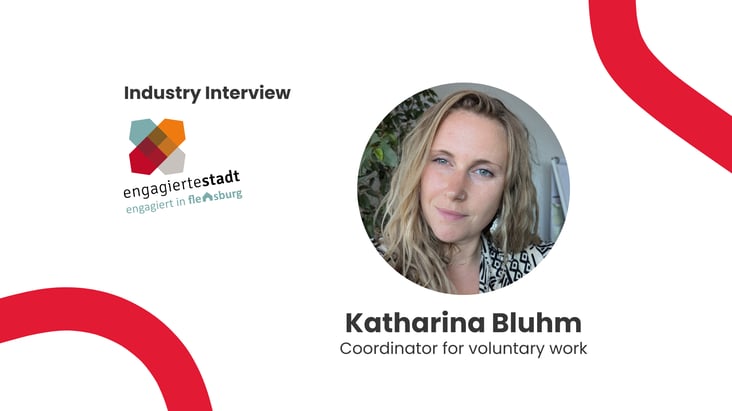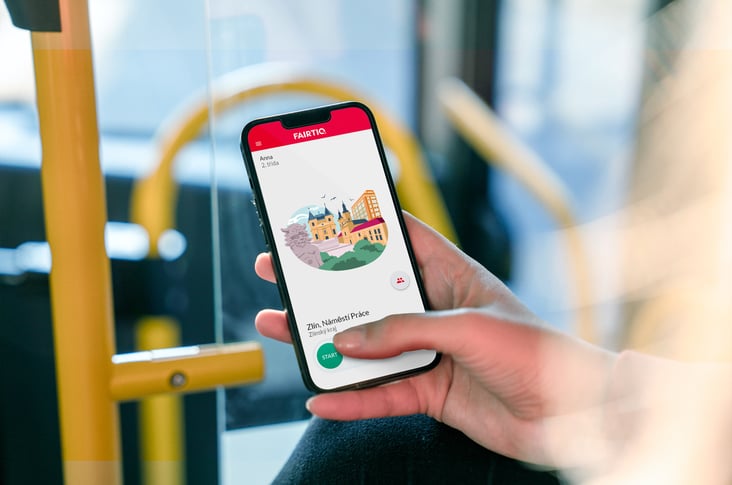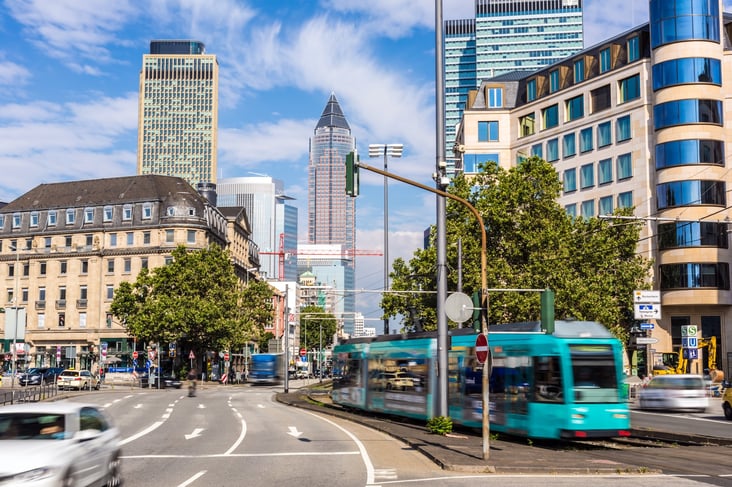
Luise Rohland is a member of FAIRTIQ's Digital Marketing team. Her work focuses on analysing data to identify how FAIRTIQ can be more user-friendly and grow usage
“I love using the FAIRTIQ app myself so I find it especially rewarding to help grow the FAIRTIQ community!”
Elias Blum is part of the FAIRTIQ team responsible for developing new services and analytics products for FAIRTIQ's public transport partners. The analysis of public transport use is a core focus of his work.
“FAIRTIQ’s public transport dataset is unique in terms of scope and level of detail. This type of data analysis generates valuable insights, which FAIRTIQ shares with its public transport partners. They can then leverage this information to make changes to their services .”
“The ultimate goal is to make public transport more attractive and therefore get more people to use this sustainable mobility solution.”
Your work shows that there is much more to FAIRTIQ than digital ticketing solutions. What are you working on at the moment?
Luise: “It is an extremely interesting time for public transport. A short-term challenge is the drop in public transport use. The longer-term challenge is offering customers more flexible mobility solutions. FAIRTIQ is uniquely positioned in this regard. We are working hard to understand what our users want and need so that we can help get them back on board.”
Elias: “Over the last few months, we have experimented with various ways of analysing traffic flows. We listened to our public transport partners and used their feedback to refine and develop these ideas further, such as interactive tools that show origin–destination flows and transfer behaviour at interchanges.”
“Our interactions with partners always generate new ideas, so we are always developing something new.”
What can FAIRTIQ do to help its public transport partners to boost their revenue?
Luise: “FAIRTIQ has a variety of solutions to help partners cut costs and increase revenue.
First, the use of a digital channel is much cheaper than regular sales channels, which tend to be more intensive in terms of human capital. Second, we know that many users now take public transport more regularly because the FAIRTIQ app makes it so easy. The increased interaction with customers that the FAIRTIQ app offers coupled with the experience acquired in different regions give us marketing levers and opportunities that most public transport companies don't have.
FAIRTIQ technology also makes it very easy to implement marketing campaigns and collect direct customer feedback. For example, this could take the form of a code for free trips or direct in-app contact with the customer, as we did with the Gornergrat campaign.”
Elias: “FAIRTIQ makes it easier for public transport companies to bring their services and products perfectly in line with their customers' needs. Thanks to large data sets on real journeys, we are able to perform pricing simulations. This lets us estimate the impact of price adjustments on the company's revenue as well as the actual pricing change for customers. These findings are really important for decisions on fare adjustments and the introduction of new fare products.”
Can you share some of the findings from your initial data analyses of the Member get Member Programme and the FAIRTIQ Bonus?
Luise: “We all know that a recommendation from a friend is much more effective than paid advertising. The data on the Member Get Member programme bears this out. Our analyses have found that users who have installed the FAIRTIQ app through this programme take public transport much more frequently than other users. This means that very quickly the public transport company recoups the CHF 6 or 6 euros it paid for each referral.”
Elias: “The bonus makes it worthwhile to use public transport on a regular basis. I get a reward if I use public transport at least five days in a given month. Our analyses have found that regions that have adopted the FAIRTIQ Bonus have more regular and frequent public transport users. Also, frequent users (at least five travel days per month) in these regions seem to spend more than their fellow passengers in regions that don't offer the FAIRTIQ Bonus.”
How can FAIRTIQ help public transport providers deliver more efficient and sustainable services and products?
Elias: “FAIRTIQ can draw on public transport use data that would normally cost a lot of money and time to collect.”
“Data collection is a great side benefit of FAIRTIQ's core activities.”
“Analysis of public transport use data can assist with a host of public transport planning issues like connection optimisation, better routing and identification of gaps in service delivery.”
What form does this FAIRTIQ–partner cooperation actually take?
Elias: “We offer our partners a number of benefits as standard, such our optimised marketing material, the possibility of in-app marketing campaigns as well as insights into FAIRTIQ user behaviour on their networks. We are constantly improving and refining these services. At the same time, we are always on hand for our partners if they have ideas for a new joint project or experiment.”
Can you give a few examples of analyses that FAIRTIQ has performed on behalf of its public transport partners?
Elias: "At the start of the COVID-19 pandemic we developed an interactive tool for one of our partners that breaks down passenger volume by bus route and maps transfer behaviour at key transport interchanges. The point here was to enable our partner to make informed decisions when adapting its timetables in response to the pandemic.
Another partner wanted to launch a new one-day travel card but wanted more information to guide the price-setting process. To assist with this process, we analysed daily spending distribution by location.
Through our data analysis work like evaluating off-peak experiments or simulating different pricing scenarios and the impact of capping on revenue, we are able to provide our partners with helpful insights."
Could you go into the idea of data privacy and security a little more?
Elias: “FAIRTIQ only uses data to improve the FAIRTIQ app and our partners' products. We never share this information with third parties. It goes without saying that we comply with the EU's strict data protection regulations. But our own data protection rules are even more stringent. We've published a blog post on this very topic and you can also find lots more information on our website.”
Before you go, what FAIRTIQ-related events and developments are you most looking forward to this year?
Luise: "I look forward to having real-life, in-person meetings with my team as well as spur-of-the moment trips to the mountains, powered by FAIRTIQ of course!"
Elias: "I look forward to turning our prototypes into fully fledged products and delivering them directly to our partners. It will also be great to power up the FAIRTIQ app and finally travel freely around Switzerland, and even take trips to FAIRTIQ regions in other countries!"
Thanks, Luise and Elias, for taking part in the Q&A!







Share